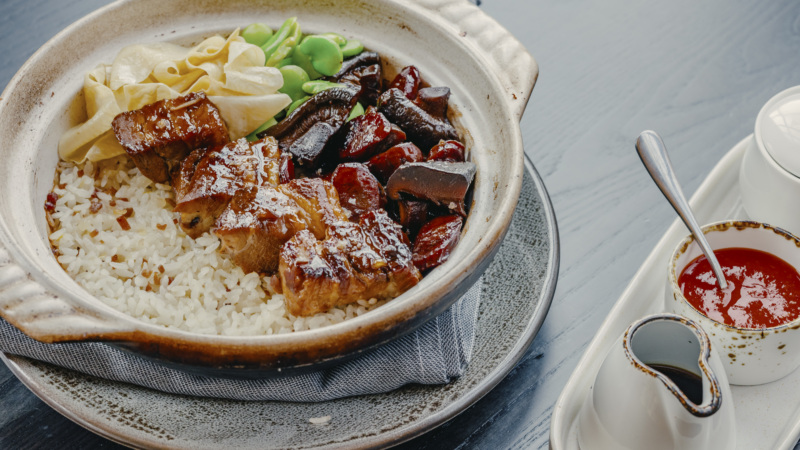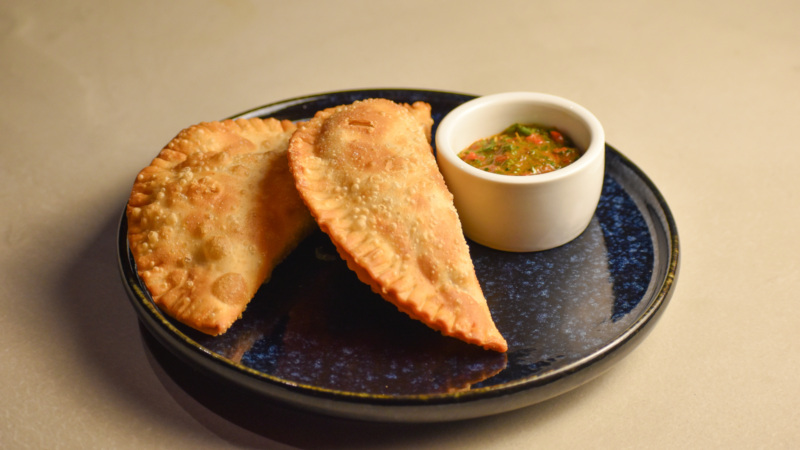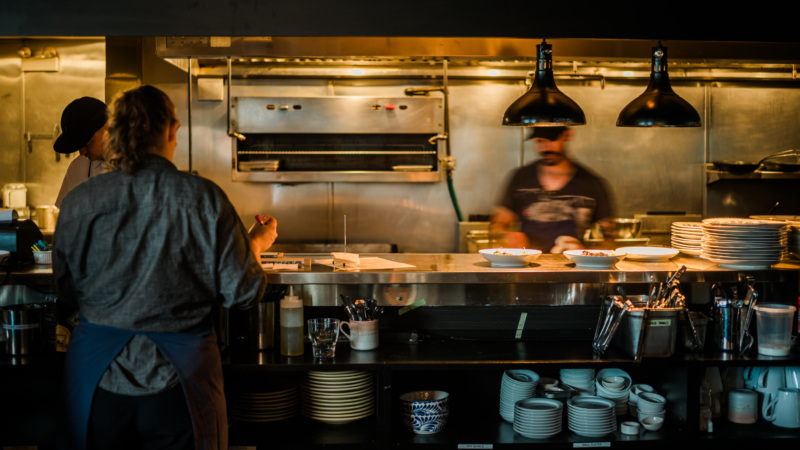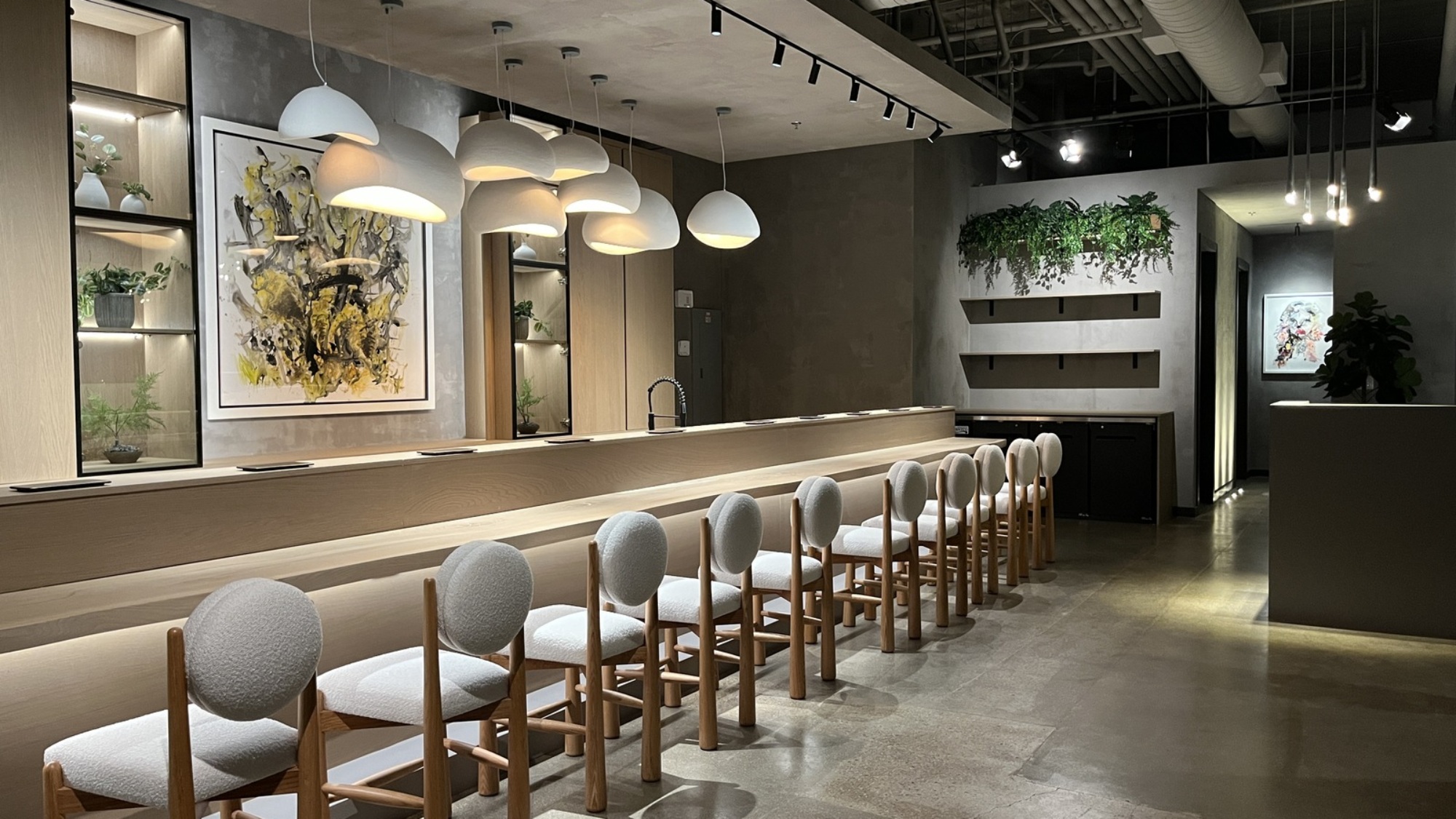
Meet Kyōten Next Door, Otto Phan’s Affordable Omakase Outpost
There’s been a burst of omakase restaurants opening across America the past couple of years, and Chicago is no exception, from Omakase Yume to Sushi By Scratch to Jinsei Motto. However, Otto Phan retains the crown for serving some of the best (and most expensive) sushi omakase in town at Kyōten, priced accordingly at around $450 a pop.
For his next act, Phan recently opened Kyōten Next Door, with a more accessible $159 omakase offering, featuring 16 courses of sushi. Expect mostly nigiri with the occasional maki roll or hand roll, ending with tamago for dessert.
Interested in checking out Kyōten’s more casual offshoot? Here’s everything you need to know.

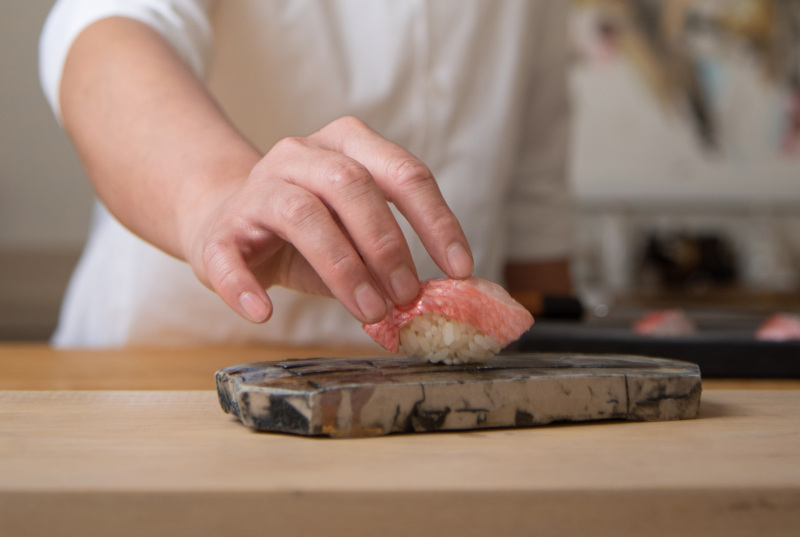
1. The sister restaurants are indeed next door to each other.
Phan’s two restaurants are side by side in Logan Square. Phan considers Kyōten the flagship, where he will personally be your sushi chef every evening. If you’re looking forward to Phan’s colorful commentary and thoughtful sushi education, you’ll probably want to opt for Kyōten, but his signature style and careful guidance can still be felt next door.
“Since Kyōten Next Door is literally right next door, I still get to very much see everything that goes on,” he says. “I’m occasionally at Kyōten Next Door if we’re understaffed, but people shouldn’t expect it. But what they should expect is a very good sushi meal.”
Kyōten Next Door has 10 seats at the counter with two turns a night, compared to Kyōten, which has just eight seats and one seating. The setup allows the two restaurants to share a few bottles, but Phan has distinct beverage menus for each space. There are no cocktails served at either – just beer, wine, sake, and a little bit of whiskey. Expect a lot of biodynamic wine producers at Kyōten Next Door along with lots of sake, with a low markup. “As a chef I make sure everything is delicious and chuggable,” Phan says. “Not obscure or weird. You can tell it’s a chef-curated list rather than a somm-curated list.”

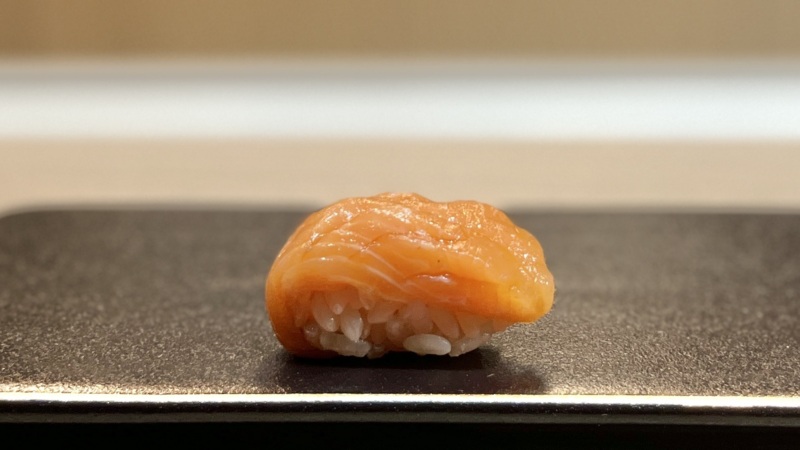
2. Next Door takes a more streamlined approach to sushi.
“Kyōten Next Door is all about deliciousness,” Phan says. “I wanted to open a cheaper, more casual place. One is not better or worse. It’s actually ethereal versus consistency. Kyōten Next Door has a number of delicious things that I wouldn’t serve at Kyōten because if it’s not rare – like it’s about to go out of season or is very hard to find – I won’t serve it. That’s philosophically the difference between Kyōten and Kyōten Next Door.
The reason that Kyōten is more than twice as expensive as Kyōten Next Door is not because it’s inherently “better,” but because ingredients that Phan chooses to serve at his flagship are so incredibly expensive. “The [price of] wild ingredients from Japan are crazy these days,” he says. “Everything has pretty much doubled since I started as a chef.”
At Next Door Phan is serving classic, straightforward sushi, rather than boundary-pushing delicacies like shirako (fish sperm sacs). “Kyōten Next Door is for the person that’s just waking up and craving really, really, good, no-fuss sushi,”


3. … But there are definitely no assembly lines here.
At Kyōten Next Door, you will have one sushi chef (itamae) preparing your entire meal. “When you’re sitting down with a chef, he’s your chef and he’s responsible for your experience,” Phan explains. “There isn’t one guy cutting fish and another guy making nigiri. It’s not an assembly line style place. All of the preparation in front of the customer passes through his hands. I think that’s one of the special things that make Kyōten Next Door different from other omakase places in Chicago.”
For now, your itamae will be either Mugi or Jorge, both extensively trained under Phan to butcher, slice, and score fish in the signature Kyōten style. Mugi worked with Phan to open Hinoki Sushiko, while Jorge is a seasoned sushi veteran from Nobu, a restaurant where Phan himself trained early in his career. “The average sushi chef doesn’t even know how to break down a fish,” Phan says. “I don’t mean to sound condescending, but I wanted to open up a place where I could train a higher level of sushi chef. I’m very blessed that Chicago has been so accepting of me, and the way that I can give back is to be a part of training more sushi chefs and leaving more of a legacy behind.”
While Phan acknowledges that “assembly line” sushi has become popular and can be more efficient, it’s not for him. “You can put out complicated fluff, but it’s lacking soul, and I take the craft seriously,” he says. “I’m one of those Asian kids that was supposed to be a doctor and I obviously didn’t, but I think I went very far because I took my profession seriously. I was very dedicated to my craft and kept my partying at a very minimum. This isn’t a doomsday profession where you’re always the broke artist. I don’t buy into that mentality. Life gives you what you put in, and this is a wonderful profession to be in,” he says.


4. There are only two crossover ingredients.
“All the ingredients are different at the two restaurants, except for the vinegar,” Phan says. “Most of the taste of the rice actually comes from the vinegar. People will have differing opinions on what is better, but the Kyōten style is always very strong with the vinegar taste in the rice.” Phan sources several different vinegars from Japan and makes a proprietary blend combining them with salt and kombu. The rice itself will be different – with larger-grained (and more highly coveted) inochi-no-ichi rice Kyōten versus koshihikari rice at Kyōten Next Door. “Koshihikari is the standard prized rice of Japan,” Phan says. “The difference is mostly textural.”
The only bite of nigiri that will be the same between the two restaurants is the final bite of custardy tamago. Tuna will be served at both, but while you’ll always have wild tuna at Kyōten, you might have Boston wild or Spanish farmed tuna at Kyōten Next Door, depending on the season.


5. Some old favorites are returning.
Aged Japanese A5 wagyu and scallops are always on the menu at Kyōten Next Door. The beef is aged for three weeks and served as nigiri, with that distinctively high vinegar rice helping to cut through the fat. The scallops—served whole and beautifully scored— are blanched in dashi with lemon for a refreshing bite. “These are really wonderful, delicious things that I stopped serving at Kyōten because it’s important to have strong themes for a restaurant, but to be honest, I do have customers that miss these bites,” Phan says. “So now I get to serve them next door, which is awesome.”
6. The chic design is courtesy of local artist Su Yang.
Phan met Chicago artist Su Yang at Kyōten when she was a diner, and commented that he needed some artwork in the sparse space. “Kyōten was very bare bones originally because I’m just a dude,” Phan says. “Su showed me her artwork and I was blown away.” Yang renovated Kyōten as her first restaurant project, and fully designed Kyōten Next Door. “All the artwork hanging on the walls is hers,” Phan says. “She picked out everything from the music to the chopstick holders. Kyōten Next Door probably has a better vibe than Kyōten. It’s the newer place, so it should be a bit better.”
Amber Gibson is a Chicago-based journalist specializing in travel, food, and wine. Her work has appeared in Departures, Food & Wine, Saveur, Bon Appétit, and Travel + Leisure. Follow her here; follow Resy too.



